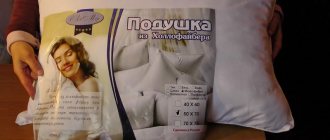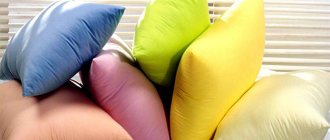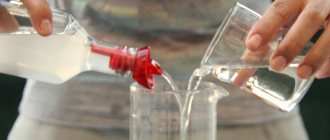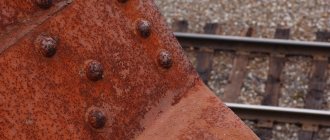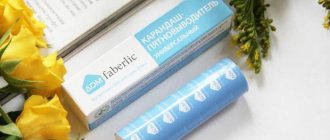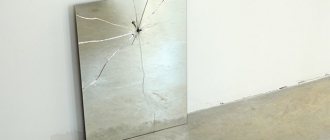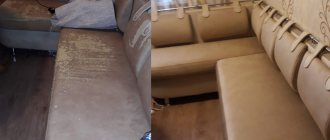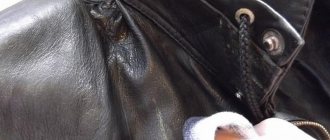Author Textile Guru Reading time: 5 min.
Insulation for jackets is divided into two types: natural and artificial. The first includes goose down, which is considered expensive and not the most practical option. In contrast, synthetic filler is light, cheap, and provides excellent heat retention. These characteristics have determined the widespread popularity of holofiber when sewing down jackets, parkas and other types of outerwear.
Synthetic materials are often considered inexpensive, lower quality substitutes for natural ones. But in the case of holofiber, we often have to talk about advantages than disadvantages. How good this insulation is, warm or not, will be discussed below.
What is holofiber
Previously, the most common type of synthetic insulation was synthetic winterizer. It is still used in light industry today, only in much smaller volumes, because other types of fillers have appeared.
Hollofiber is a synthetic fiber that belongs to the group of polyesters. The structure of the filler is reminiscent of padding polyester or padding polyester, but is produced without the use of adhesives. Its main components are spiral-shaped silicone fibers. Under the influence of high temperatures they are soldered, obtaining large canvases.
Due to its softness and minimal weight, holofiber is used in the production of pillows, blankets, and mattresses. In addition, the material is very warm, durable, and unpretentious to use.
Briefly about holofiber
First of all, this filler consists of many fibers that are created in a certain way. Is it pure synthetic. The filler belongs to the group of polyesters. It is not woven or glued, unlike padding polyester. The basis is fiber, twisted (spiral-shaped). To obtain the required length, they are soldered together at high temperature.
Characteristics of artificial holofiber filler
It is believed that this holofiber material has no disadvantages. This fact is recognized by the majority of consumers and manufacturers. Holofiber is slightly inferior to poultry down in its heat capacity.
There are many advantages:
- weighs little;
- no electrolysis;
- maintains heat well;
- is inexpensive;
- not scary for allergy sufferers;
- is not saturated with foreign odors.
What kind of weather is holofiber filler designed for?
The choice of clothes with such filling today is huge. The reason for this: reasonable price and excellent heat capacity. At what temperature to wear a jacket with holofiber depends on the density of the material itself that filled the fabric. The temperature standards given below clearly indicate what you can expect and not freeze if you dress correctly.
- Density 100 g/sq.m – from +10°С to +5°С
- Density 150 g/sq.m – from +5°С to -10°С
- Density 200 g/sq.m - from -10°C to -20°C
- Density 300 g/sq.m – from -20°С to -30°С
The higher the density of the holofiber, the more severe the frost you can walk in comfort.
Sintepon and holofiber fillers: differences
The fiber from which both materials are created is the same. However, the manufacturing technology is different. In padding polyester, every thread is glued. Another property is holofiber, where the threads are welded and hollow, which gives lightness, airiness and, as a result, warmth. Synthetic winterizer is heavier and less cold resistant.
Comparison: holofiber and other types of fillers
As insulation, synthetic winterizer has disadvantages. It absorbs moisture, gets wet, and becomes heavier. Thermal insulation is average, and holofiber is an order of magnitude higher.
Down jackets are often the main competitor. Products made from natural filler are very warm. And this is undeniable, but they are expensive. If you happen to get caught in wet snow or rain, such clothes quickly get wet and are more difficult to wash and maintain in good condition. All this does not frighten holofiber, which is close to ideal.
Holofiber or padding polyester? Which filler to choose
The question arises, what is better to choose for winter coats, jackets, children's clothes and bedding. To answer this question correctly, you need to know the disadvantages of padding polyester.
Its disadvantages:
- absorbs odors;
- a bit heavy;
- low thermal insulation;
- collects moisture.
Holofiber does not have these disadvantages, which makes it more interesting to use than other synthetics. Thanks to siliconization, its fibers repel moisture. Because of this, pillows and blankets with it are preferable. These same qualities should incline in favor of holofiber when choosing a children's overalls or jacket.
Application in jackets, pros and cons
Hollow fiber is most often used when sewing down jackets. And also found in parks, classic-cut outerwear as an additional filler. Even with a small thickness, such a fabric ensures heat retention, because the material is highly dense.
To better understand what holofiber is in jackets, consider the advantages:
- Light weight. Weighs a little more than isosoft.
- Warm, and therefore used as the main insulation.
- Does not cause allergies. Unlike natural fillers, synthetic fibers can be safely used by allergy sufferers.
- Not electrified.
- Jackets with synthetic filling can be washed many times without fear that the insulation will bunch up or lose its uniformity.
- Does not absorb odors.
- Reasonable cost compared to goose down and some synthetic fillers.
Among the disadvantages of the material, one can note lower heat retention rates than that of a goose feather. But the problem is solved by using a thicker layer of filler.
A relative disadvantage of holofiber is that it does not allow air to pass through well. But most clothing manufacturers use “breathable” materials for sewing winter jackets, which compensates for this disadvantage.
Where to buy holofiber?
Holofiber filler is used not only for outerwear, but in handicrafts for stuffing toys; pillows, blankets, decorative elements for a crib, etc. are made from it. Therefore, many needlewomen are interested in the important question: where is it profitable to buy holofiber?
Here is a list of the main places:
- any handicraft store, in big cities it’s Leonardo or Igolochka
- Wildberries, Ozone and other online stores, as a rule the prices there are better than in specialized ones
- Aliexpress! This is an unexpected place; we recently discovered it. Aliexpress has a lot of craft supplies. You can also buy holofiber filler there
- Ikea, in the discount department, sells pillows tightly stuffed with holofiber for 30-40-50 rubles.
Holofiber is an excellent modern synthetic filler with a lot of advantages and a minimum set of disadvantages.
Which is better: Thinsulate or Holofiber
Thinsulate is one of the popular insulation materials used in outerwear. Its composition is siliconized polyester. Its fibers have a spiral shape. They are thin, and therefore create a microporous structure and contribute to effective heat retention.
Among the advantages of Thinsulate, it should be noted that it is warm and light, holds its shape, and is not afraid of water. It is also hypoallergenic, dries quickly and does not require special care.
If we compare Thinsulate and Holofiber, the first one will win in most respects. It is warmer and lighter. But the advantages also come with disadvantages. For example, Thinsulate is so warm that it can cause overheating of the body, and frost can cause not only discomfort, but also pose a danger. In addition, it is expensive and accumulates a static charge.
Thus, in its price category, holofiber was and remains the best filling for jackets. It is quite warm and durable.
Unique properties are the basis of excellence
So what is remarkable about the material that the space bureau, which equipped Gagarin, chose among dozens of options, considering how high the requirements are in this area. The answer lies in the outstanding properties of the unique insulation - the minimum layer protects against frost down to -60⁰C, and it is not afraid of the piercing wind. At the same time, it is harmless and retains its shape in any conditions. And relatively recently, based on the textile variety, construction insulation and sound insulation Hollofiber®-STROY appeared - a universal fabric adapted to the scope of application and having all the parameters necessary for the consumer.
The analogues available on the market are, one way or another, vulnerable, whether to fire, to water, to time, to rodents, or, on the contrary, they themselves are capable of eliminating not only pests, but also residents from the house. Hollofiber, if not ideal, is close to it: environmentally friendly, flame-resistant, non-hygroscopic, unsuitable for pests, and with such an arsenal of useful properties it is cheaper than many other insulation materials.
The success of the product lies in the raw materials - primary processing guarantees maximum strength and stability of the fibers, and the production method - Holofiber refers to non-woven materials produced by thermal bonding (thermal cross-linking) without the use of phenolic resins and aggressive chemicals. Imagine: the smallest polyester fibers are crimped in different directions, they are already reliably fused into each other during the formation process, and high temperature connects them into a single fabric. Naturally, this is a technologically complex process that requires appropriate conditions.
Holofiber or down
Which of these insulation materials is better? Many people ask this question, because both options have advantages. There are a lot of winter clothes on the market with both synthetic and natural fillers.
As mentioned above, swan down is warmer than synthetic insulation. But here you need to take into account the composition of the natural filler. Feather ideally occupies less than 40% of the total mass, and the remaining 60% is down. Unfortunately, modern manufacturers save money without guaranteeing such a ratio.
Now about the disadvantages. Jackets with natural filling cause difficulties during washing, so it is better to send such clothes to dry cleaning. In addition, down products are contraindicated for allergy sufferers. Add the high cost to these disadvantages, then draw your conclusions.
How to wash things with holofiber in a washing machine, is it possible to do this?
Washing at any temperature, even 80°C, will not cause any harm to the filler itself. However, you definitely need to look at what the top is made of. This can be raincoat fabric or other dyed fabric.
It can shed unpleasantly from high temperatures, so it is better if the water is about 40 °C. Holofiber does not require shaking, as is the case with natural down. It is enough to squeeze it thoroughly, and the fibers will return to their natural state, the holofiber will fluff up inside.
Washing is not dangerous not only for outerwear that contains holofiber, even for pillows, blankets and other things with holofiber fibers. Eliminates the unpleasant responsibility of taking it all to the dry cleaner. After all, you can easily wash it at home in a machine yourself without any problems.
Safe warmth
The characteristics of Holofiber®-STROY declared by the manufacturer are not a successful marketing ploy, but a reality. The material has been certified in all respects, it has been examined by government institutions and independent experts, domestic and international organizations. The Research Institute of Building Physics has recognized it as an effective insulation material: the fibers themselves are hollow, airy, and there are tiny pores between them, and air is the best insulator.
Igor Bessonov, leading researcher at the institute’s testing laboratories and test supervisor, described the material as follows:
Igor Bessonov
The thermal conductivity of Hollofiber®-Stroy grade “1000” (the type of one of the samples with which the tests were carried out) in a dry state is 0.039 W/(m˚C); thermal conductivity for operating conditions in the external building envelope – 0.04 W/(m˚С). It is found in a number of materials that can be classified as effective insulation materials. Effective insulation is a material whose thermal conductivity is less than 0.04 W/(m˚C).
One of the most important qualities of insulation and sound insulation is safety for health. It is confirmed by the international certification system Oeko-Tex Standard 100, which tested the fabric for the presence of hundreds of substances harmful to humans and nature. This is confirmed by Bessonov:
Igor Bessonov
Hollofiber®-STROY are materials made from polyester fibers, bonded in a special way - “thermo-cross-linked”, thermally bonded. This means that there is no binder between them, and, accordingly, there are no emissions into the atmosphere.
Environmental friendliness and hypoallergenicity are natural, because Holofiber®-STROY is a type of the most popular filler that provides us and our children with a restful sleep on soft pillows, under light blankets. The kids have toys stuffed with it, and warm, comfortable winter clothes too - with Holofiber. Therefore, for internal insulation, including children’s rooms, the material is recommended as completely harmless.
Zero hygroscopicity is scientifically confirmed by tests and studies. For example, a materials scientist, candidate of technical sciences M. Yu. Treshchalin tested the insulation based on data from the Research Institute of Nonwoven Materials and concluded that the smooth fiber structure and the small diameter of the monofilaments prevent the rise of liquid; the fabric is not able to absorb and retain more than a percent of the total volume. According to the results of a comparative analysis, Holofiber is indicated for use in places with high humidity. To simplify, in order for the canvas to absorb this percentage, you don’t even need to pour it over it, but drown it and hold it, which is unlikely in real conditions. Even direct ingress of moisture as a result of violation of installation technology does not harm the material, as the experience of construction expert, honored inventor V. G. Granik has shown:
V. G. Granik
During the construction of the house in May 2010, two layers of Holofiber non-woven material, 100 mm thick, were laid with a 50 mm compaction into the roof, between the rafters. A defect was identified in the structural part of the roof; in September 2013, the metal tiles, sheathing and membrane film were removed. Holofiber, after more than 3 years of operation (in winter the temperature in the house was maintained at least plus 12-15⁰С), was in good condition, no changes in it compared to the original appearance were found during inspection: color, structure of fibers and their elasticity not changed. Confirmation of the preservation of the elasticity of the fiber is its return (recoil) to the original dimensions - 200 mm after removing the sheathing and membrane.
When you try to burn the material, which is what is usually done when checking fire resistance, you will not be able to see the “pioneer fire”. The insulation belongs to the group of fire retardant polyesters. Direct exposure to flame leads to melting and coking, without releasing toxic substances into the air.

